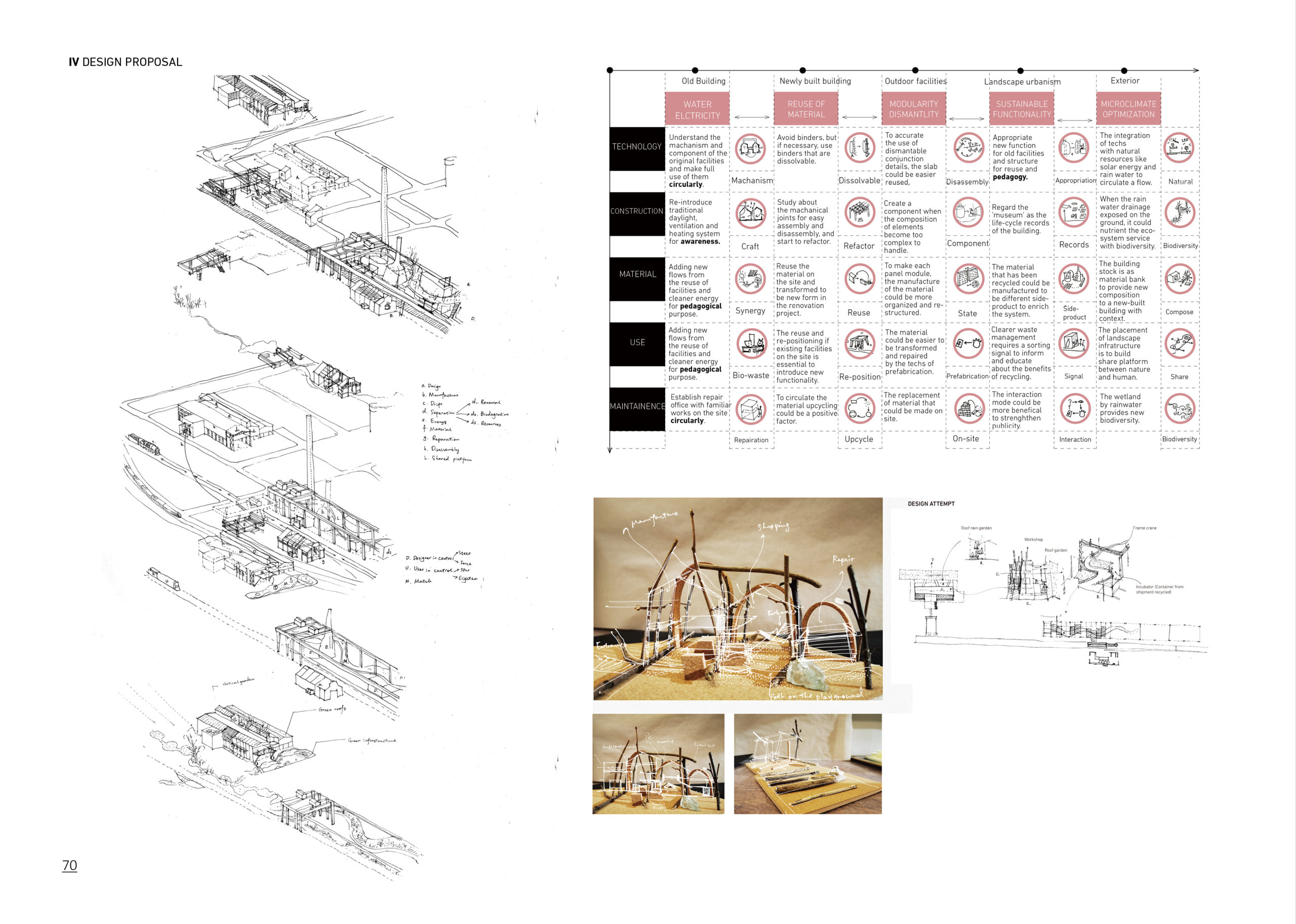Poster & Design proposal
Building a circular future means redesigning industry logic from building
scale to business scale.
-Kasper Guldager Jensen
Architect, Senior Parner 3XN, Director GXN
As it is shown here, the poster is an ongoing work for tracing the development of the systematic design method implementation to the site between the theoretical analysis to the on-site experiment. The poster is not meant to convey a clear and exact design plan for the project, but more like a design testbed on top of the previous research and analysis.
L1+L2 Poster
Business cycle + Pedagogical cognition for circulation
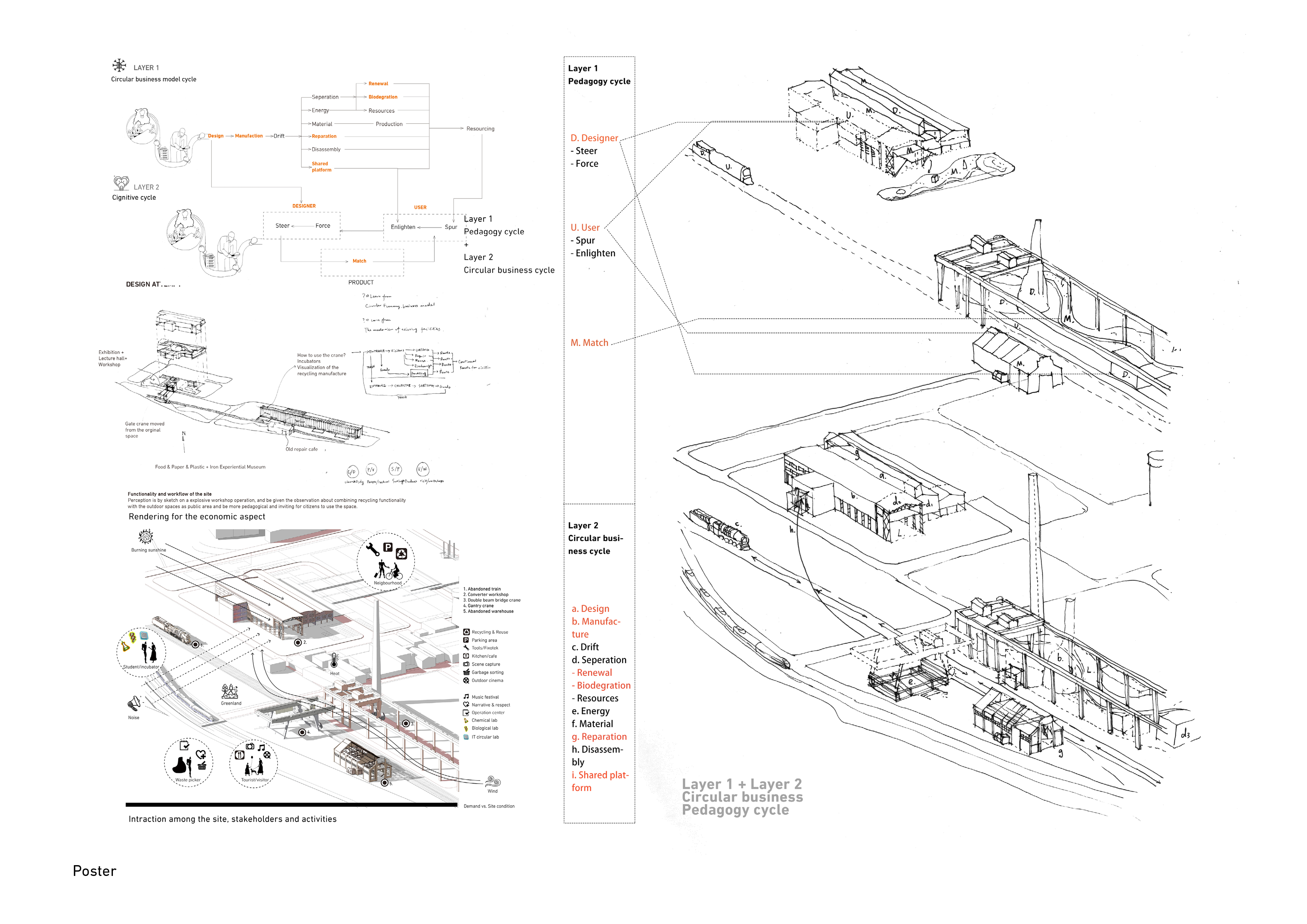
L3+L4 Poster
Bio-waste cycle + Re-cycle
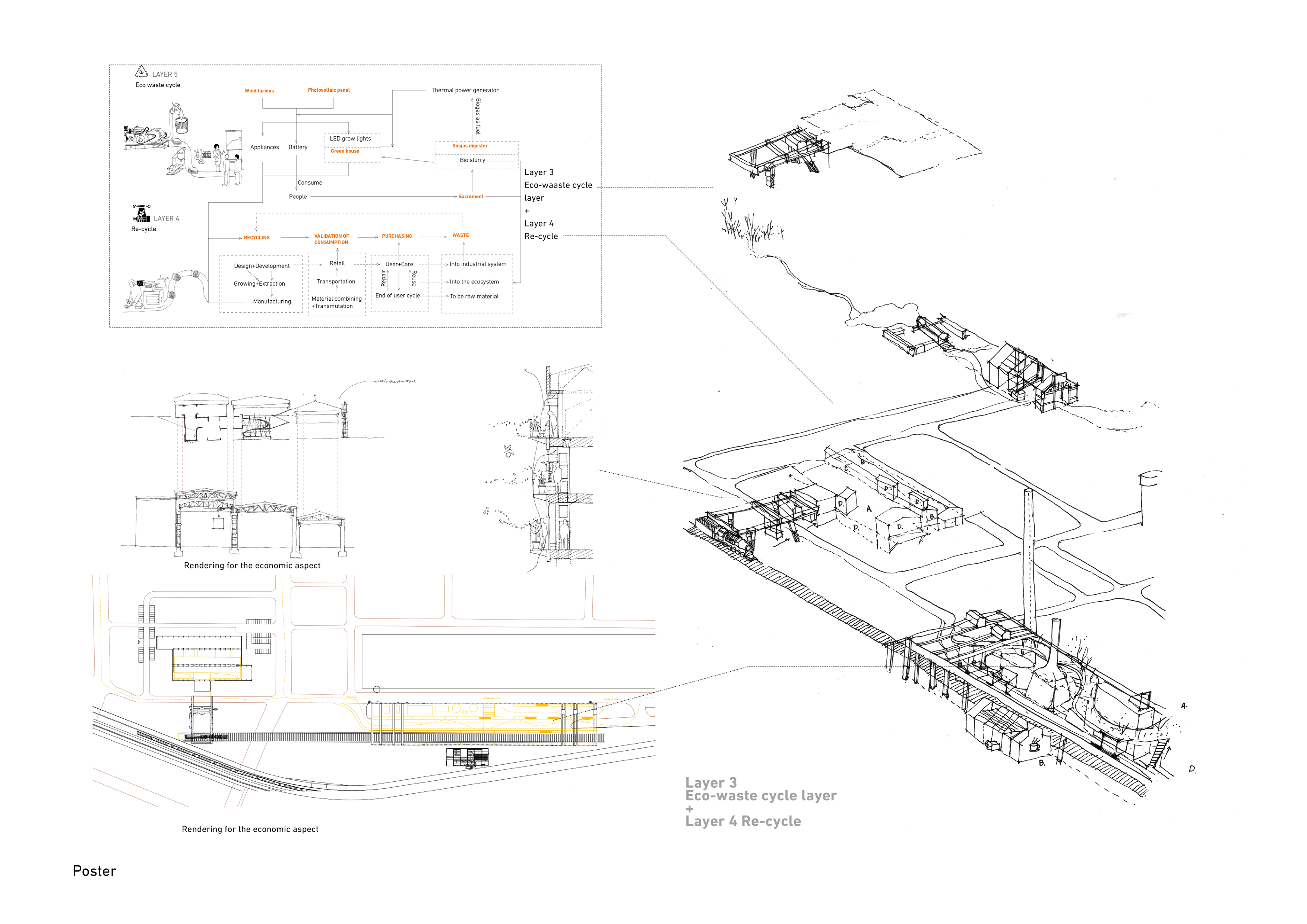
L5+L6 Poster
Sustainable building lifecycle + Ecosystem service cycle
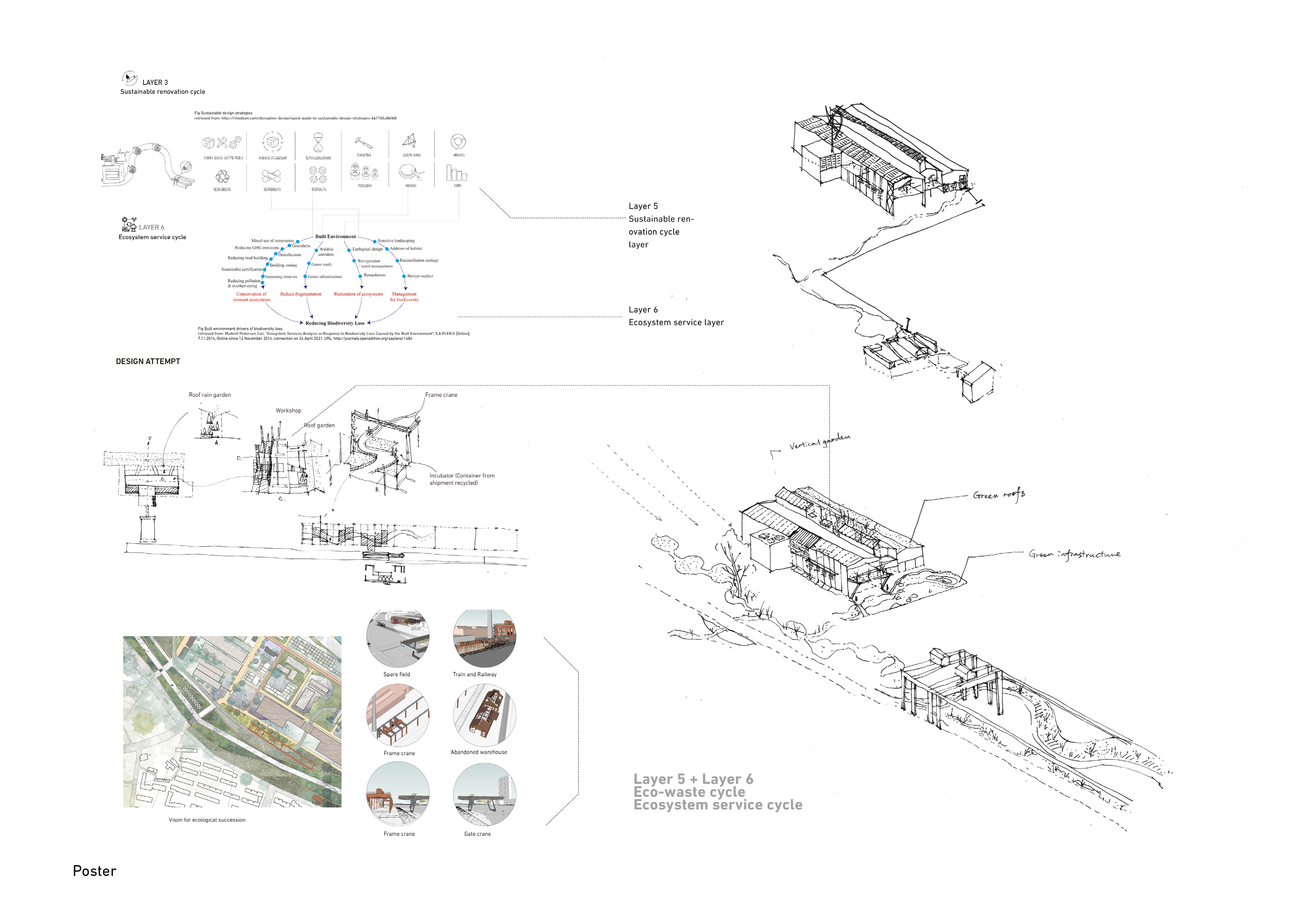
Reflection
Design as testbed
The way I mention design as a testbed may sound rude and reckless. Still, it is an essential understanding and take-away from the process of thesis writing. In the beginning, I consider the design proposal as the results. That knocks me down to the tangled situation of whether or not I should focus more on the research part of the design part. At the beginning of thesis writing, they are fragmented. Until the writing part ends, I wake up to understand the design is like a translation recording every information we collected from the process, and it is like integration and manifestation. While we research, finding the proper way to align the data and array similar properties while specifying those particular elements is essential. The way we do research is the consequence of how we present our analysis; that is why we need to examine our way of analyzing and mapping the information board.
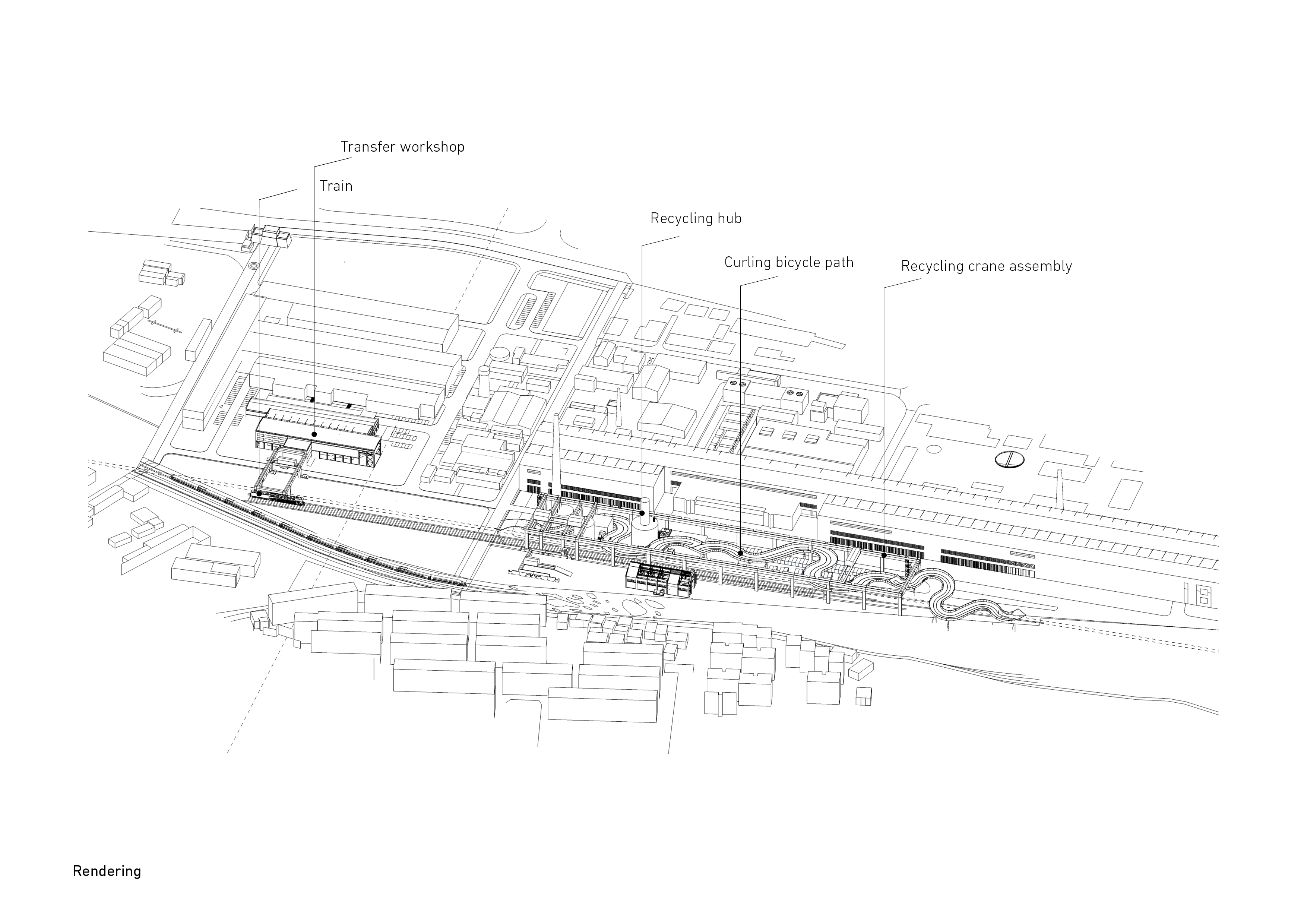
Sketch as manifestation
Sketch has been my tool to perceive the world and express my own feeling for almost 20 years, from the first time I pick up the paintbrush. It is a sensitive, flexible, fragile but versatile tool that could easily follow the mind in real-time. The mind has two thining models; one is divergent thinking, the other is systematic logic linear thinking. The former has been proven to have a closer relationship with creativity, imagination, and joy, which is in the designer’s need. I have been exploring many ways to help with divergent thinking, like computation, algorithm, and digital expression; however, they are helpless when I wanna find the spark of inspiration. Finally, through the thesis writing, I realize the sketches could be the best spark, exceeding its original meaning of tool and inspiration and spark itself. With pen, and paper, the thoughts hidden and intertwined in mind could be manifested and developed. So, as an experimental expression, I tried to write and draw every graph of design proposals as sketches from my hand and heart. It has been of great help to help me reach out to reality and free away from my thoughts and imagination.
